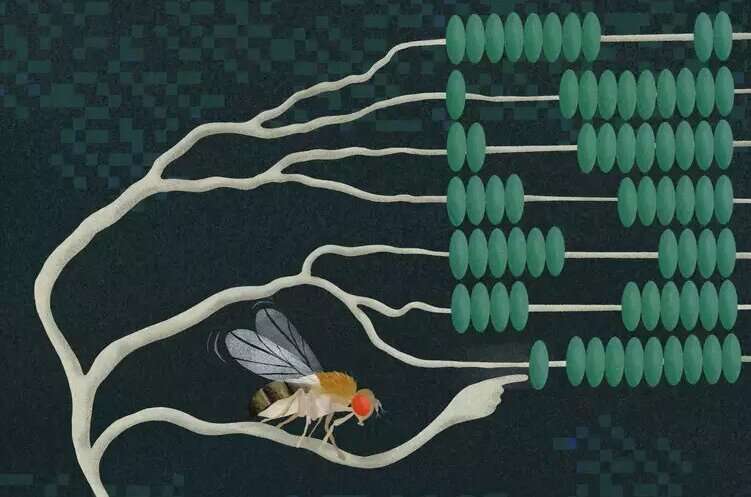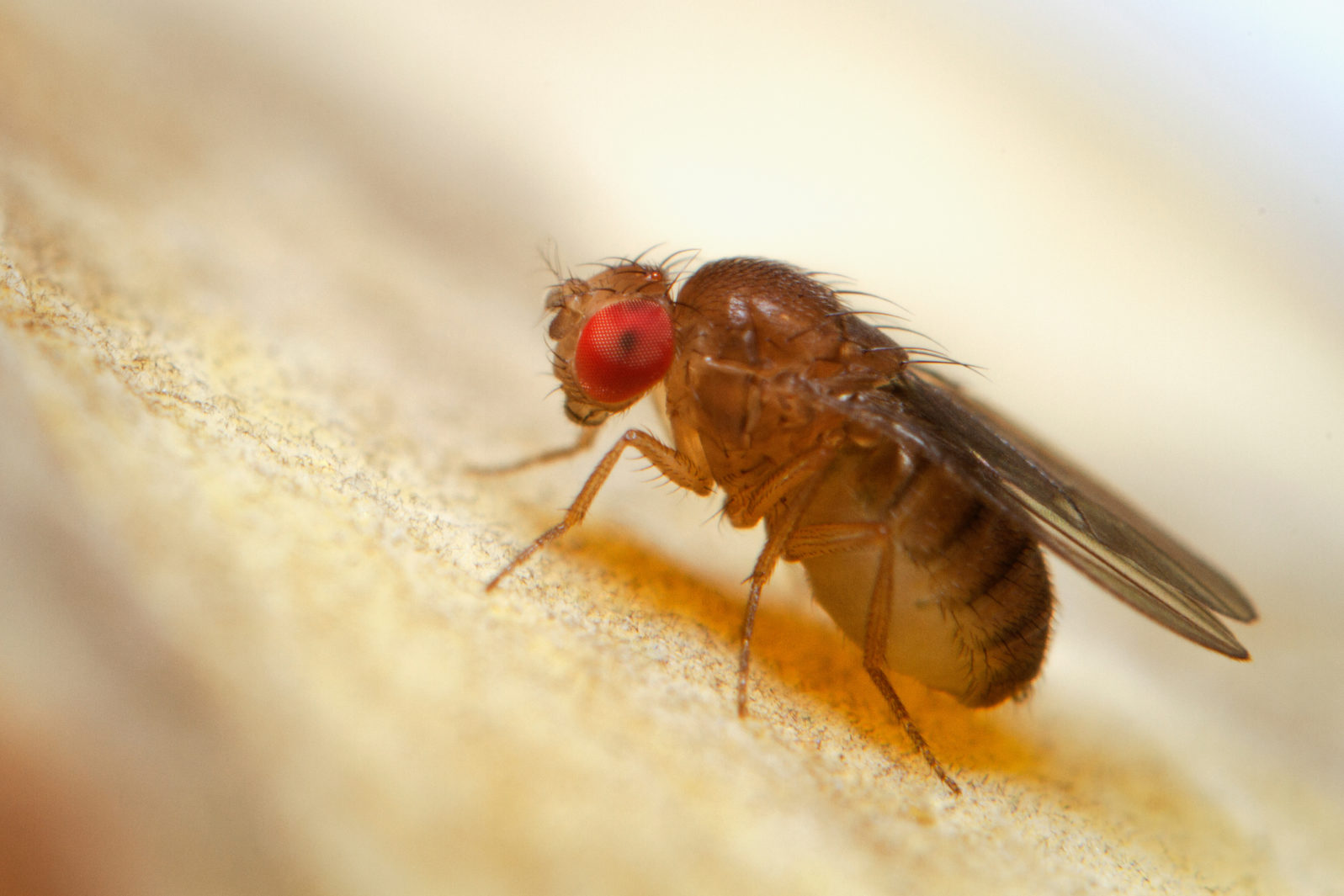Single Neurons Perform Complex Math — Even in Fruit Flies
The fly wants something simple — to avoid getting swatted or eaten, for example — but that requires some algebraWe may not think of our neurons as performing complex calculations but they must do so in order to determine where sound is coming from or where a moving object is headed. For a long while, how they do it has been a mystery. Recently, researchers at the Max Planck Institute reported that they have “discovered the biophysical basis by which a specific type of neuron in fruit flies can multiply two incoming signals,” the “algebra of neurons”:
We easily recognize objects and the direction in which they move. The brain calculates this information based on local changes in light intensity detected by our retina. The calculations occur at the level of individual neurons. But what does it mean when neurons calculate? In a network of communicating nerve cells, each cell must calculate its outgoing signal based on a multitude of incoming signals. Certain types of signals will increase and others will reduce the outgoing signal—processes that neuroscientists refer to as “excitation” and “inhibition.”
Max Planck Society, “The algebra of neurons: Study deciphers how a single nerve cell can multiply” at Phys.org (February 23, 2022) The paper is open access.

MPI for Biological Intelligence, i.f., Kuhl
The fly is just trying to avoid getting swatted or eaten. But that is both more complex and more mathematical than we might have supposed:
The scientists focused on so-called T4 cells in the visual system of the fruit fly. These neurons only respond to visual motion in one specific direction. The lead authors Jonatan Malis and Lukas Groschner succeeded for the first time in measuring both the incoming and the outgoing signals of T4 cells. To do so, the neurobiologists placed the animal in a miniature cinema and used minuscule electrodes to record the neurons’ electrical activities. Since T4 cells are among the smallest of all neurons, the successful measurements were a methodological milestone.
Together with computer simulations, the data revealed that the activity of a T4 cell is constantly inhibited. However, if a visual stimulus moves in a certain direction, the inhibition is briefly lifted. Within this short time window, an incoming excitatory signal is amplified: Mathematically, constant inhibition is equivalent to a division; removing the inhibition results in a multiplication. “We have discovered a simple basis for a complex calculation in a single neuron,” explains Lukas Groschner. “The inverse operation of a division is a multiplication. Neurons seem to be able to exploit this relationship,” adds Jonatan Malis.
Max Planck Society, “The algebra of neurons: Study deciphers how a single nerve cell can multiply” at Phys.org (February 23, 2022) The paper is open access.
The fly, of course, is not “doing” any mathematics; the math computations are inherent in the functions of the neurons.
The researchers are working on the assumption that the same sorts of neuron computations undergird a human ability to determine the location of sounds, focus attention, or orient oneself in space. More study will be needed to confirm that.
In the same way, a Monarch butterfly from Canada can land in the same tree in Mexico that a great-grandparent did — without doing any thinking at all. (Two generations hatched, laid eggs, and died in the meantime.) Navigation expert Eric Cassell argues in his recent book, Animal Algorithms, that the butterfly is working with an internal algorithm for navigation, much as the fruit fly is working with neurons that do math. As we learn more about insects, we learn about the mathematics that enables their existence.
So why are fruit flies a surprisingly useful life form to study in order to learn about humans?
You may also wish to read:
Human neurons are different from animal ones, researchers say.
A Canadian research team got a rare chance to compare live brain tissue from donors undergoing surgery with that of rodents. The human neurons’ interactions turned out to be of more different types, show more different features, and have more complex interactions than the rodent ones.
and
Researchers can’t explain: Memories drift from neuron to neuron. Memories are supposed to stay put in the neurons that lay them down. A recent study, published at Nature, shows that they move a lot… The mobile memories are only one of many recent remarkable neuroscience finds that have been challenging textbook wisdom.
Also: How do insects use their very small brains to think clearly? How do they engage in complex behavior with only 100,000 to a million neurons? Researchers are finding that insects have a number of strategies for making the most of comparatively few neurons to enable complex behavior. (Denyse O’Leary)
